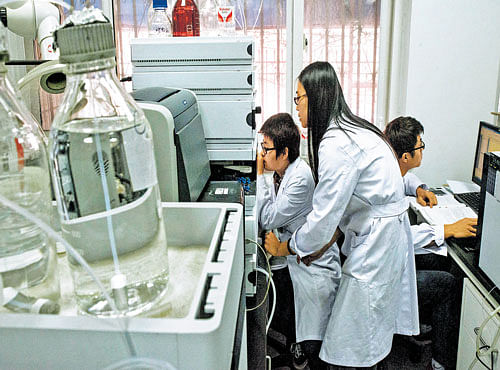
A team of researchers from the Indian Institute of Science (IISc) have developed a sensor that can detect nitrogen dioxide (NO2), a harmful gas mostly emitted by diesel engines or thermal power plants, in the atmosphere.
The sensor can detect even a single NO2 molecule among millions of other molecules and it works even at room temperatures, unlike other common nitrogen sensors that are known to be high temperature devices.
In order to develop the sensor, the IISc team used fibre bragg grating, an optical fibre similar to the ones used for internet services. However, it can reflect one particular wavelength of light and transmit others. The IISc team covered the fibre bragg grating with an ultra thin layer of a recently discovered nano-material called the reduced graphene oxide and developed the sensor.
“An optical fibre is usually used for communication purposes but by ingeniously modifying the clad of an optical fibre, we are able to use it in different applications like gas sensing and bio-sensing”, said Sundarrajan Asokan, professor, Department of Instrumentation and Applied Physics and Robert Bosch Centre for Cyber Physical Systems. He is one of the authors of the research paper on the sensor.
Ajay Sood, Professor, Department of Physics and co-author of the study, said: “Every process involved in fabricating the sensor, from manufacturing the etched fibre bragg grating to coating it with reduced graphene oxide, are scalable processes, which makes it easier to implement in large area sensors.”
NO2 is a harmful gas and can react with air to cause acid rain. The gas can also reduce the amount of oxygen in marine ecosystems. If its concentration in air crosses a limit, it could be harmful for humans too. Detecting this gas is an important first step towards dealing with air and water pollution.